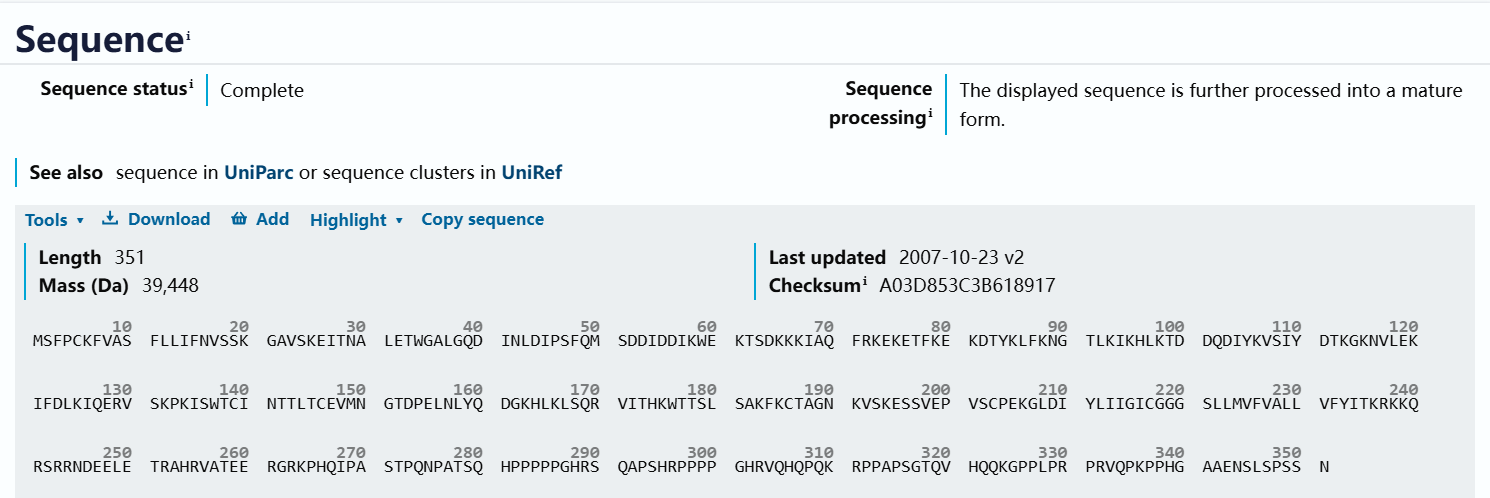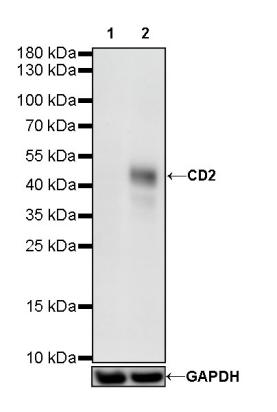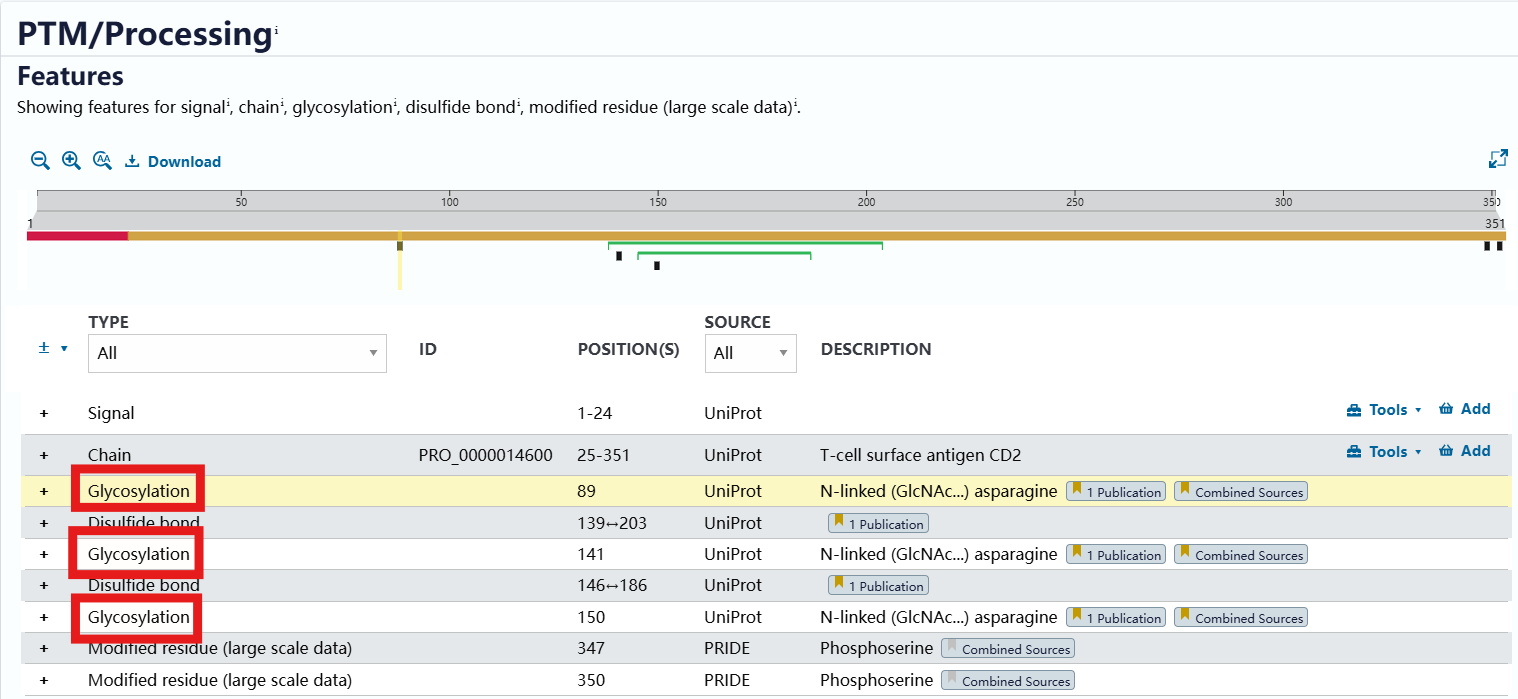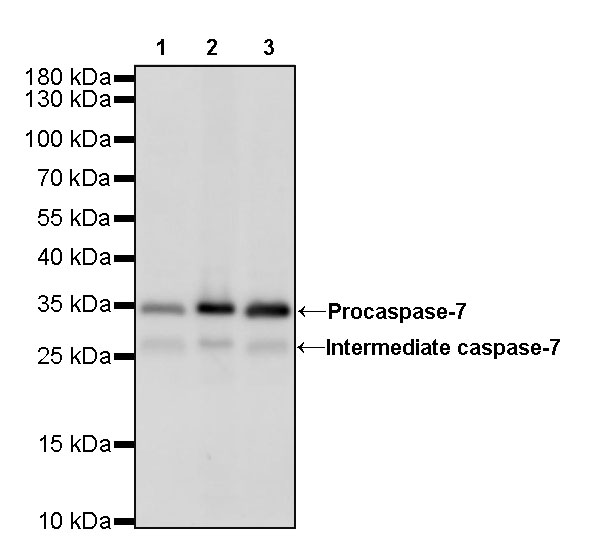- Cart 0
- English
Resolving WB Band Discrepancies: A Clear Guide
1. Target Protein Exists in Other Forms, the Most Common Scenario
● Post-translational Modifications: Such as glycosylation, common amino acids that accept glycosylation are Serine (Ser), Threonine (Thr), Asparagine (Asn), and Hydroxylysine. For instance, CD2, according to UniProt, should have a predicted molecular weight of around 39 kDa, but the apparent molecular weight is generally around 45 kDa due to glycosylation at multiple sites. In actual experiments, if one wants to investigate whether the molecular weight difference is caused by glycosylation, one can treat with the glycosidase PNGase F to remove the glycans and then perform Western Blot (WB). In addition to glycosylation, there are also various other post-translational modifications such as phosphorylation, ubiquitination, methylation, acetylation, etc. Among these, glycosylation, acetylation, and methylation usually increase the apparent molecular weight, while phosphorylation usually does not change or increases it.

Theoretical Molecular Weight of CD2 is around 39 kDa

Apparent Molecular Weight is around 45 kDa

Glycosylation of CD2 as shown in UniProt
● Splicing: For example, Caspase-7 exists in multiple forms:
1) Procaspase-7: The pro-form of Caspase-7, with a molecular weight of approximately 37 kDa;
2) Intermediate caspase-7: The intermediate form of Caspase-7, with a molecular weight of approximately 28 kDa;
3) Caspase-7 p20: One of the active fragments of Caspase-7, with a molecular weight of approximately 20 kDa.
Procaspase-7 is the inactive pro-form of Caspase-7 with a larger molecular weight. When cells are stimulated by apoptotic signals, procaspase is activated by self-cleavage or cleavage by other caspases (such as initiator caspases), forming smaller active subunits that combine to form active heterodimers. This situation can be verified by setting up induced and non-induced groups. The apparent molecular weight after splicing will be smaller.

WB results of Caspase-7 rabbit monoclonal antibody
Lane 1: HeLa whole cell lysate 20ug
Lane 2: Jurkat whole cell lysate 20ug
Lane 3: HEK-293 whole cell lysate 20ug
Secondary antibody: Goat anti-rabbit IgG, (H+L), conjugated with HRP at a dilution of 1/10000
Predicted molecular weight: 34 kDa
Observed molecular weight: 28, 35 kDa
Exposure time: 180s
● Multimers and Covalent Bound Dimers: If the apparent molecular weight increases in multiples of the predicted molecular weight, consider whether it is a multimer. The addition of reducing agents such as DTT can verify whether it is a non-covalently bound dimer.
2. Protein Abnormal Migration
● For Proteins with Molecular Weight Less Than 20 kDa
The traditional Tris-Glycine system is not effective for separating small molecular weight proteins when used in SDS-PAGE (Sodium Dodecyl Sulfate-Polyacrylamide Gel Electrophoresis), mainly due to the following reasons:
1) The Impact of Ion Front: In the Tris-Glycine system, the stacking gel typically uses Tris-HCl buffer at pH 6.8, while the electrophoresis buffer and separating gel use Tris-Glycine buffer around pH 8.3. When electrophoresis starts, glycine has a low degree of dissociation in the stacking gel, moving slowly and forming a moving ion front. As the electric field acts, glycine gradually dissociates and accelerates, producing a large number of free dodecyl sulfate ions (DS-) in the process. These ions can bind with small molecular weight proteins, causing them to aggregate or denature, thus affecting resolution;
2) Migration Issues of Low Molecular Weight Proteins: Due to the above reasons, small molecular weight proteins may be hindered when passing through the stacking gel into the separating gel, leading to blurry bands, tailing, or reduced resolution. This phenomenon is particularly evident when separating proteins or peptides less than 20 kDa;
3) The Impact of Buffer System pH: The high pH value of the Tris-Glycine system may lead to some modifications or degradation of small molecular weight proteins during electrophoresis, further affecting their separation.
Therefore, it is recommended to use the Tricine-SDS-PAGE system for separating small molecular weight proteins or peptides below 20 kDa. Tricine, as one of the components of the electrophoresis buffer, has a lower pKa value (8.15), which means it will not produce a large number of free DS- ions like glycine during electrophoresis, thus reducing the impact on small molecular weight proteins and providing higher resolution. Additionally, Tricine-SDS-PAGE usually uses a lower concentration of acrylamide gel to meet the separation needs of small molecular weight proteins.
● Protein charge or special structures such as the unique arrangement of amino acid side chains can cause migration too fast or too slow during electrophoresis.
3. Issues with Protein Markers
Compared to non-prestained markers, prestained markers, although more convenient to use, also have the phenomenon of molecular weight shift due to the coupling of dyes, and the migration rate of the same marker will also vary in different electrophoresis systems.

abs923 Prestained Protein Marker (10-245 kDa)
4. Sample Preparation Issues
● Membrane proteins heated at 95 degrees for denaturation can cause aggregation, leading to an increase in the apparent molecular weight of the detected bands;
● Incomplete denaturation or reduction of samples can affect the exposure of antigenic epitopes, thereby affecting their migration rate. When preparing samples, ensure that the loading buffer is sufficient, within the shelf life, and the correct lysis buffer is chosen, paying attention to the specific components;
● Samples must be fresh, as some proteins are highly susceptible to degradation, which should be noted during preparation.
5. Excluding the above issues, the most important thing is to fully understand whether your sample expresses the target protein and the level of expression, and to check the manufacturer's verification images to understand the specificity of the antibody.
|
Catalog Number |
Product Name |
Specification |
|
Rabbit anti-β-Actin Monoclonal Antibody |
100 μL |
|
|
Rabbit anti-GAPDH Polyclonal Antibody |
100 μg |
|
|
Rabbit anti-β-Tubulin Monoclonal Antibody |
100 μL |
|
|
Mouse anti-β-Actin Monoclonal Antibody |
100 μL |
|
|
Mouse anti-GAPDH Monoclonal Antibody |
100 μL |
|
|
Rabbit anti-α-Tubulin Polyclonal Antibody |
100 μg |
|
Absin provides antibodies, proteins, ELISA kits, cell culture, detection kits, and other research reagents. If you have any product needs, please contact us.
|
Absin Bioscience Inc. |
 Follow us on Facebook: Absin Bio Follow us on Facebook: Absin Bio |
April 30, 2025
Clicks:100
